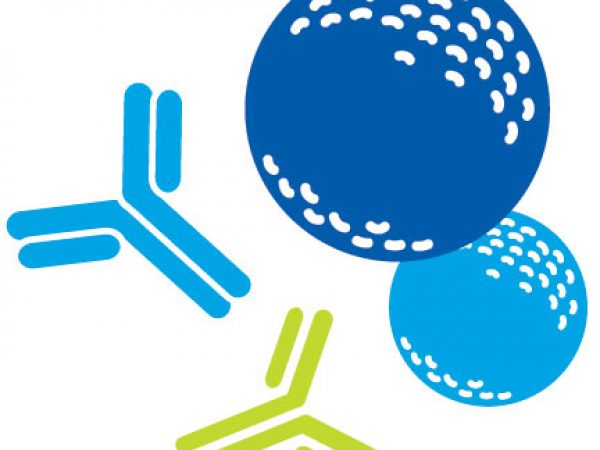Advances in Immunotherapy: Tackling CAR T-cell Therapy Resistance
In a study published in the AACR’s journal Cancer Discovery in December, a team of researchers from the Perelman School of Medicine and the Children’s Hospital of Philadelphia identified mechanisms by which some children’s B-cell leukemias develop resistance to CD19 CAR T-cell therapy, an investigational immunotherapy that yields long-lasting remissions in many patients with this disease.
Before we dive into the complex science behind this discovery, let’s get some basics straight:
The concept of directing a patient’s immune system to effectively attack his or her cancer cells has come to fruition in the last few years, and immunotherapies, such as immune checkpoint inhibitors and CAR T-cell therapy, are providing durable responses, even in some patients with advanced cancers.
CAR T-cell therapy, as discussed previously on this blog, is a type of investigational immunotherapy in which T cells are removed from a patient’s body and genetically modified so that they can recognize the patient’s cancer cells. The modified T cells, when reintroduced into the patient’s body, multiply and attack cancer cells.
CD19 CAR T-cell therapy is a type of CAR T-cell therapy that targets a protein called CD19 present in B cells. CTL019 is one form of CD19 CAR T-cell therapy that was developed by Carl June, MD, and his colleagues at the University of Pennsylvania, and is currently being tested as treatment for some forms of leukemia and lymphoma. CTL019 received a breakthrough therapy designation from the FDA in July 2014 to help expedite the development of this therapy for patients with relapsed/refractory acute lymphoblastic leukemia, a disease that has significant unmet medical need.
While this therapy has resulted in exceptional treatment outcomes in clinical trials for pediatric patients with aggressive leukemias, recent reports estimate loss of activity with any CD19-directed immunotherapy in 10 to 20 percent of patients, says senior author of the study Andrei Thomas-Tikhonenko, PhD, professor of pathology and laboratory medicine and pediatrics at the Perelman School of Medicine at the University of Pennsylvania, and chief of the Division of Experimental Pathology at the Children’s Hospital of Philadelphia.
“Some of them can be successfully retreated, but in others a more pernicious kind of leukemia may emerge, which no longer responds to CTL019. In some cases, resistance is accompanied by the disappearance of the target CD19 protein from the cell surface, as reported by Stephan Grupp, MD, PhD, and his team last year,” he explains.
What causes resistance?
What are the molecular mechanisms behind this resistance? How is the tumor still able to survive without CD19?
These were the questions raised by Thomas-Tikhonenko’s team almost two years ago, says lead author of the study Elena Sotillo, PhD, a senior scientist in Thomas-Tikhonenko’s lab and the driving force behind this project. Because, in theory, CD19 is required by B cells—even if they are tumor cells—for their development and proliferation, she explains.
To tease out the mechanisms of resistance, Sotillo and colleagues studied multiple tumor samples from four pediatric patients with leukemia collected before they were treated with CTL019 and/or after they developed resistance to therapy.
“The initial surprise that came very quickly was that the CD19 gene was not lost. The gene was still there,” she says. Sotillo and team found that while the CD19 protein was still being made, it was as a shorter version that escapes detection by the immune system.
Alternative splicing – a trick cancer cells play to morph and hide from the therapy
The researchers first found that in some samples, one of the two copies of the gene coding for CD19 and located on chromosome 16 was deleted, and the other copy was damaged as a result of mutations in coding areas of the CD19 gene, most frequently in exon 2. However, they also learned that in the very same cases, by a process known as alternative splicing, exons 2, or exons 5 and 6 were frequently skipped, making mutations in exon 2 largely irrelevant.
The team then conducted a series of elegant experiments using state-of-the-art technologies to understand the impact gene splicing might have on the production of CD19 protein. They found that the deletion of exons 5 and 6 resulted in premature termination of the protein and that the deletion of exon 2 resulted in the production of a modified version of CD19, which was more stable than its standard version.
“We then moved forward to see if this new isoform of the protein is functional,” says Sotillo. They found that the shortened protein was indeed functional and could perform some of the tasks that CD19 is known to handle.
The importance of exon skipping for resistance to CTL019 cannot be overstated, Thomas-Tikhonenko explains. “Without exons 5 and 6, the CD19 protein has no way of being retained on the cell surface. The case of missing exon 2 is more complex. Although the resultant protein can make it to the cell surface, albeit not very efficiently, it can no longer be recognized by CTL019,” he says.
Sotillo explains further that though the variant CD19 isoform lacking exon 2 was invisible to the CAR T receptor antigens, it was able to bind to the downstream effectors that the CD19 protein normally binds to.
It might be important to preselect patients for CTL019 and similar therapies and ensure that the alternatively spliced CD19 variants are not already present in their leukemias, Thomas-Tikhonenko notes.
What’s the next step?
“There are two ways to try to tackle CTL019 resistance,” Sotillo says. “One way would be to design new antibodies that recognize alternative epitopes within the CD19 extracellular domain. And the other would be to force the cell to make a full length CD19. In fact, both approaches could be combined.”
Understanding the biology behind such promising therapies that fail to treat some patients is as important as identifying new targets, new proteins, and developing new therapeutics, Sotillo notes.
The power of team science
“The most rewarding part of leading this study was to assemble in one room, on a monthly basis, great scientists coming from very different backgrounds and watch them find a common language—that of translational science,” Thomas-Tikhonenko says.
Thomas-Tikhonenko’s study was funded by the V Foundation for Cancer Research, William Lawrence and Blanche Hughes Foundation, Leukemia and Lymphoma Society, Alex’s Lemonade Stand Foundation, National Institutes of Health, and the Stand Up To Cancer–St. Baldrick’s Foundation Pediatric Dream Team Translational Research Grant.




